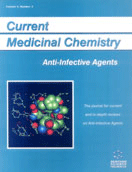Abstract
Although cell surface receptors are not usually considered to be anti-infective agents, they must be included when they serve as extremely sensitive detectors of bacterial invaders that alert and mobilize the innate immune host defense as is the case for the family of formyl peptide receptors. Gram-negative bacterial-derived and synthetic Nformyl peptides, such as fMet-Leu-Phe (fMLF), are potent chemoattractants for phagocytic leukocytes. In human, there are at least three functional receptors for fMLF, the highaffinity formyl peptide receptor (FPR), the low-affinity FPR-like 1 (FPRL1), and FPR-like 2 (FPRL2). These receptors belong to the seven-transmembrane, G protein-coupled receptor superfamily. Initially these receptors were implicated mainly in host defense against microbial infection based on their capacity to recognize bacterial chemotactic peptides. However, the identification of a large number of novel ligands for formyl peptide receptors suggests they play roles of broader biological significance. Both FPR and, to an even greater extent, FPRL1 interact with multiple exogenous and host-derived ligands which do not show homology in their amino acid sequences. As a result, these receptors are involved in proinflammatory responses seen in diverse pathophysiological states. Therefore, formyl peptide receptors may function as a first line host defense that mobilize cells engaged in inflammation and infection.
Keywords: formyl peptide receptor, fmlf, fpr, fprl, fmet-leu-phe
 12
12

